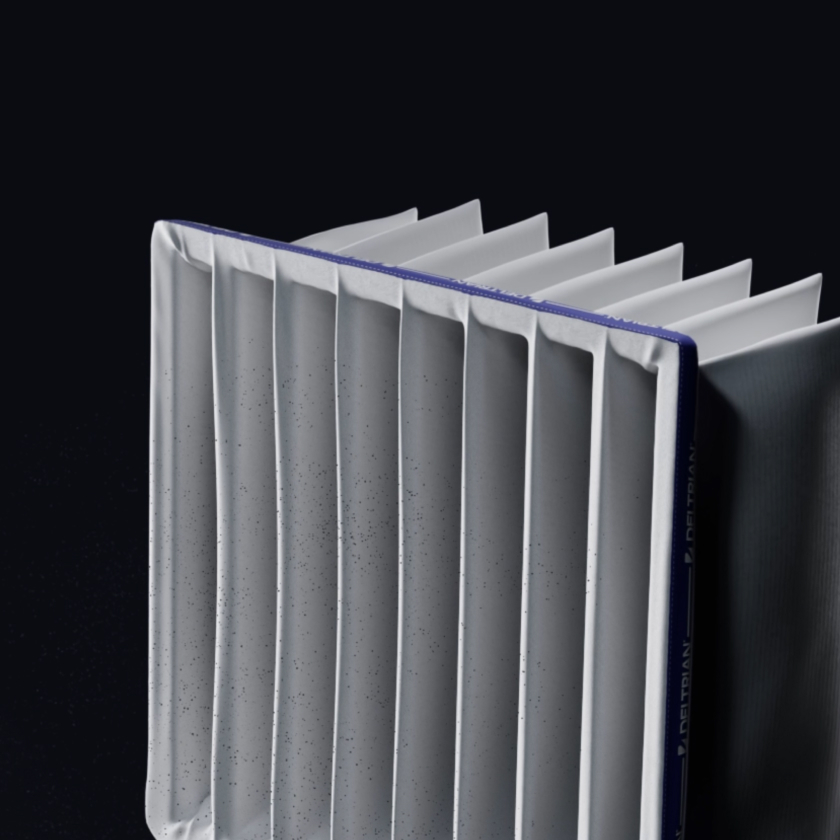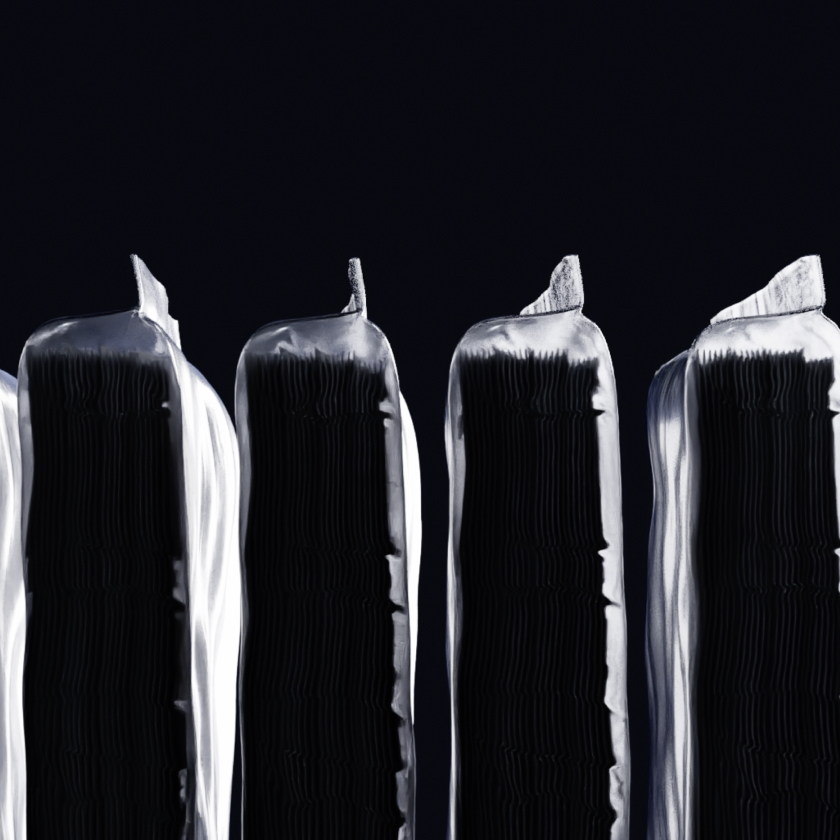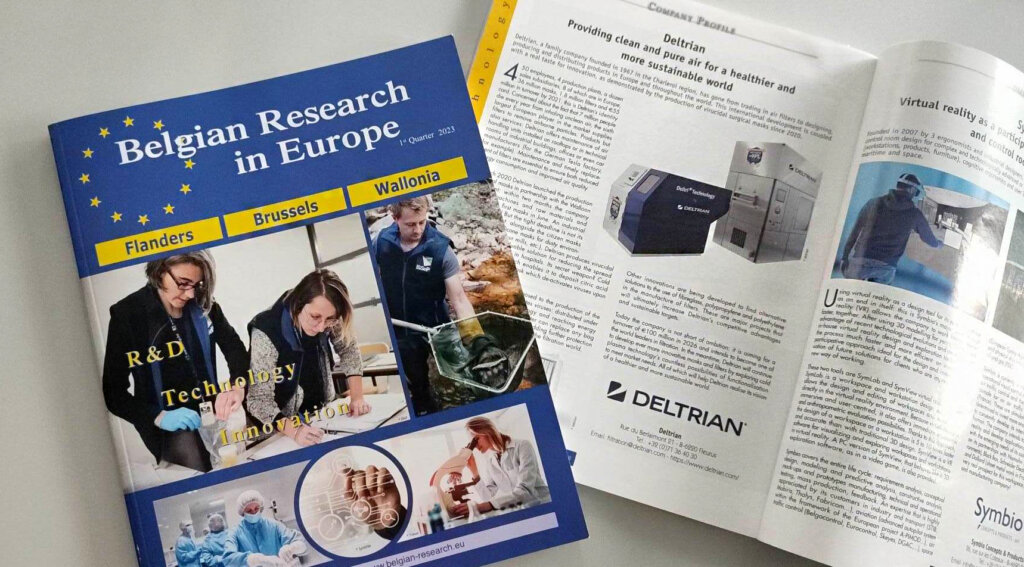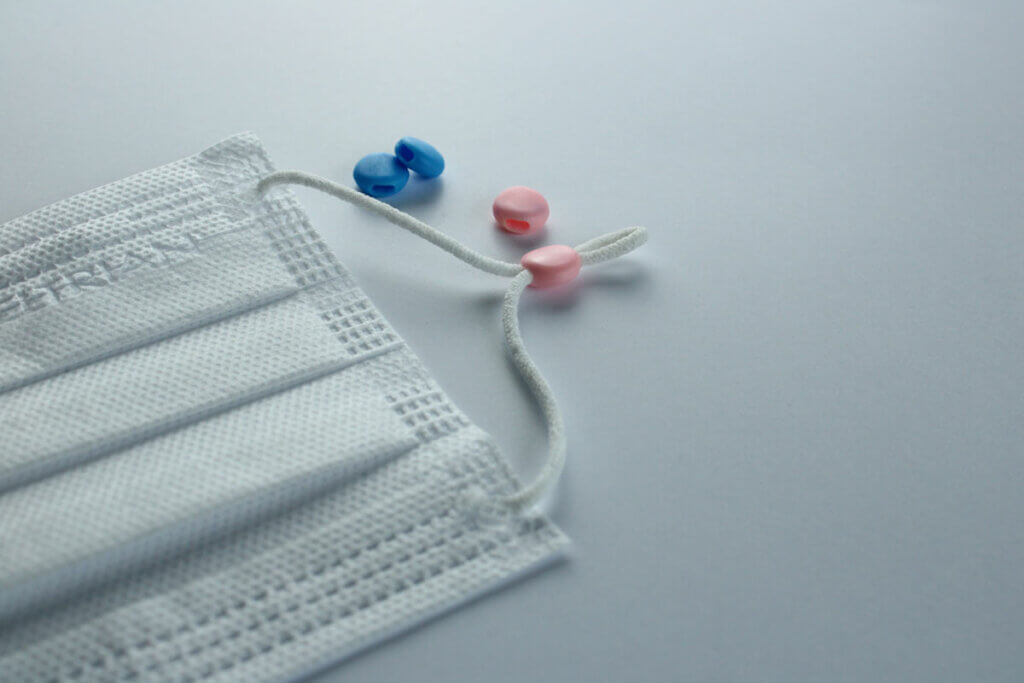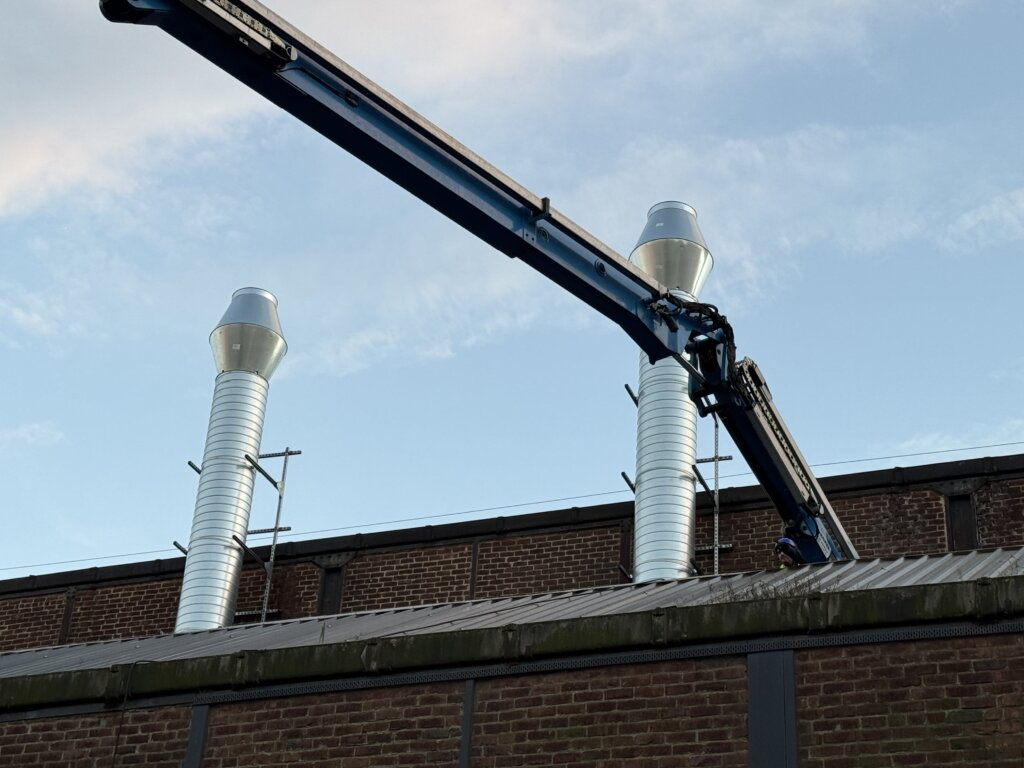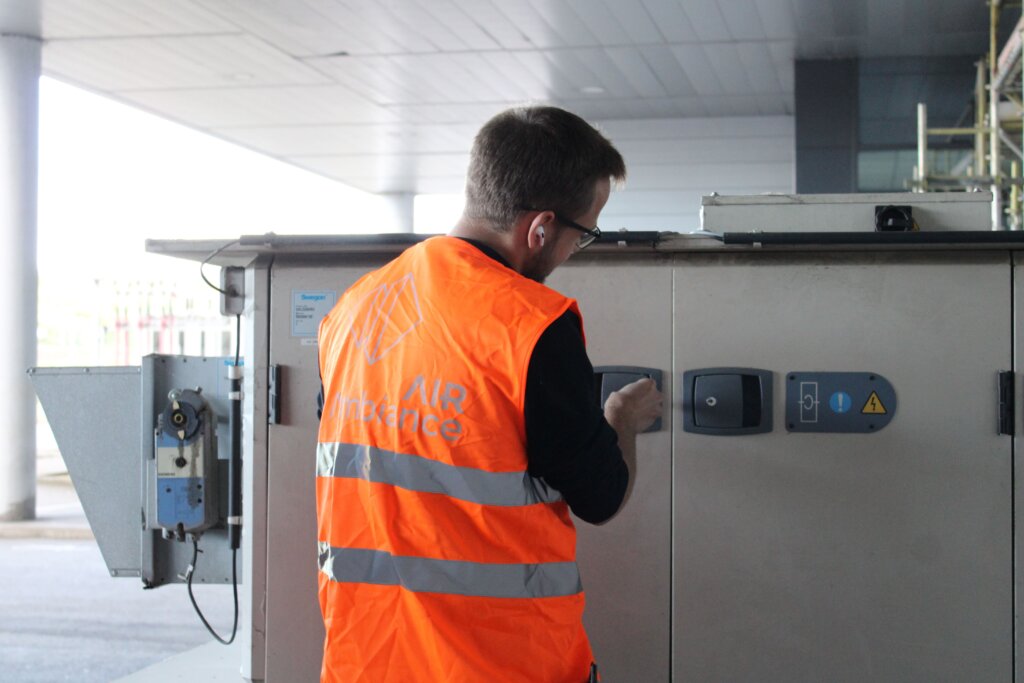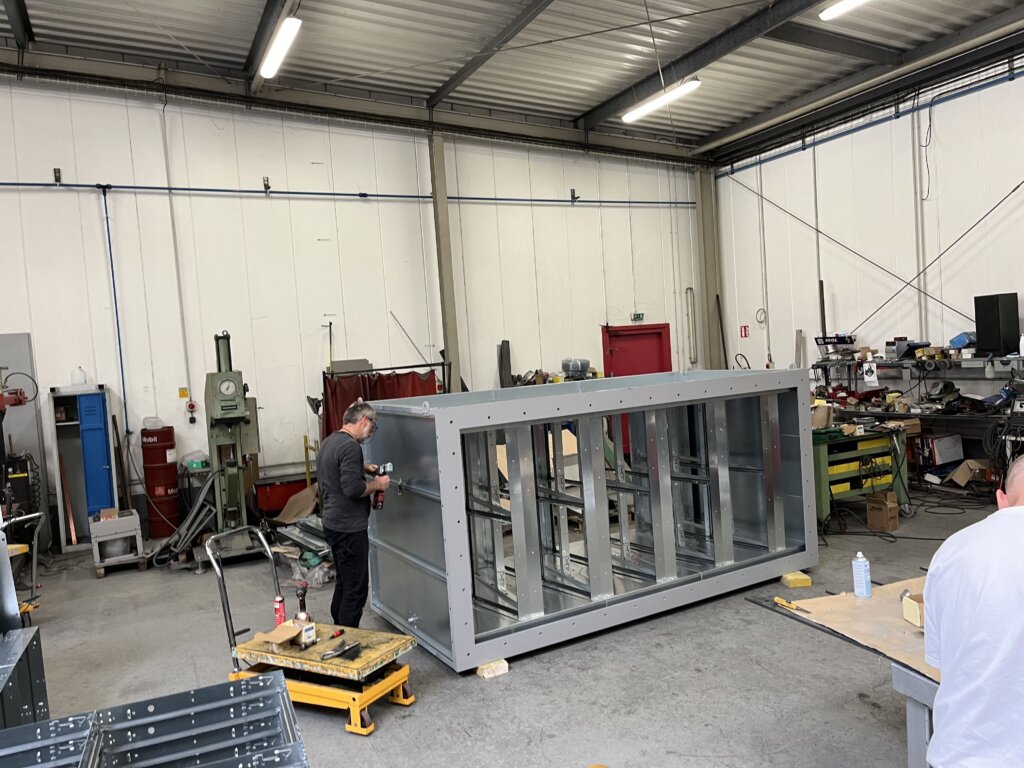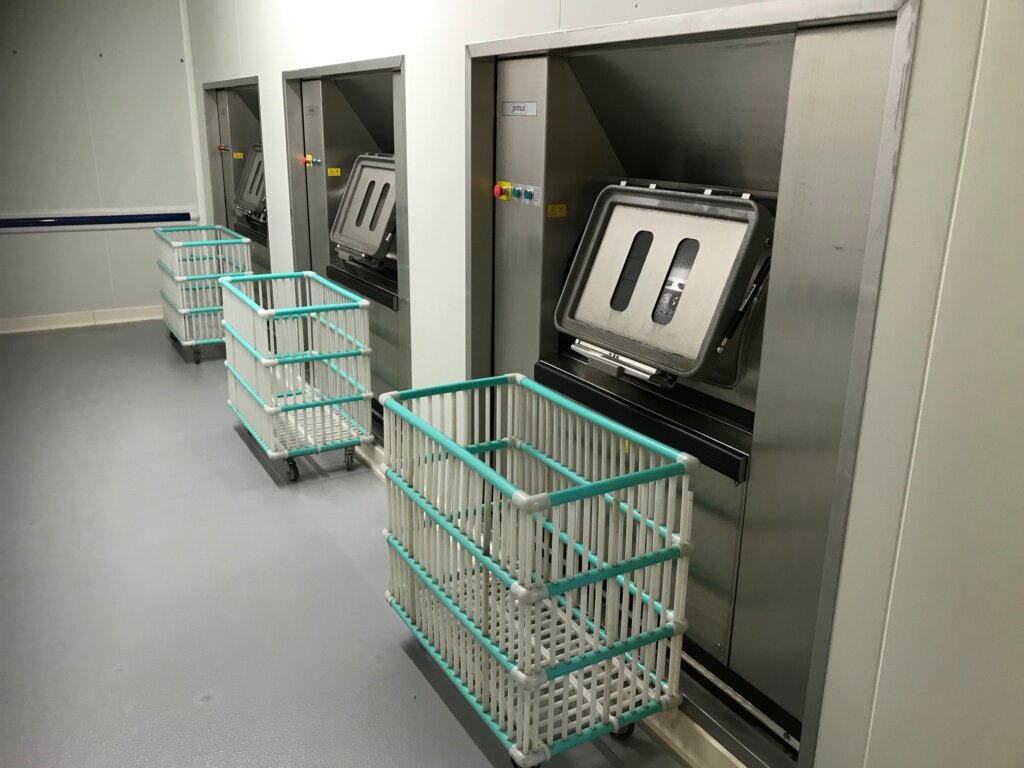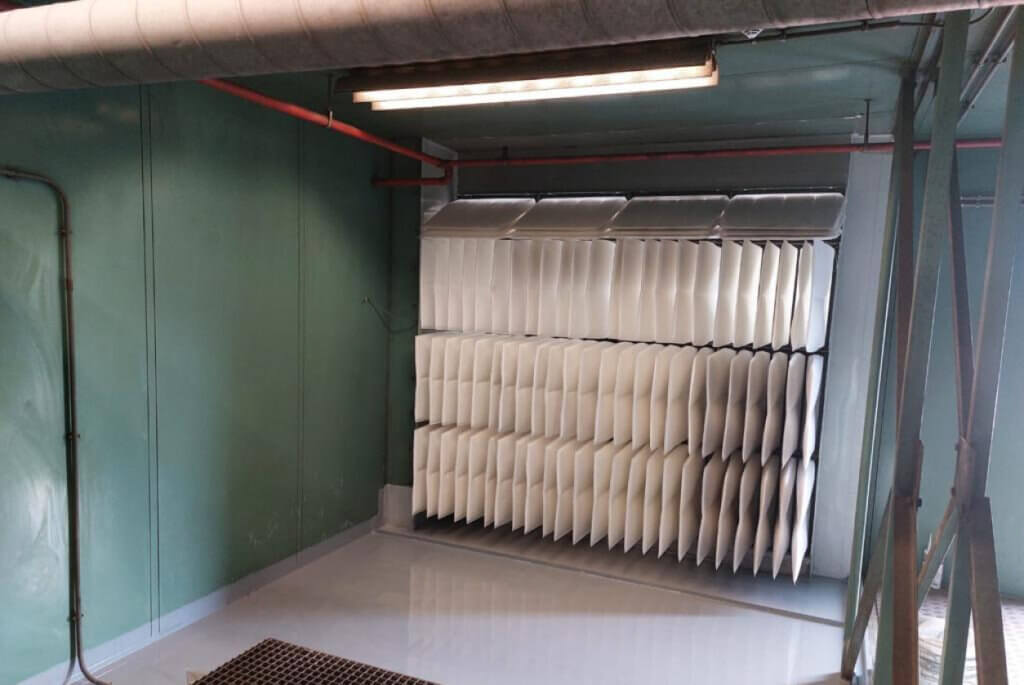ISO 16890 standard for assessing air filter efficiency.
The ISO 16890 standard was developed to assess the efficiency of air filters and measure their filtration capacity for each type of fine particle.
Published on 18.09.2023

Table des matières
ISO 16890: What is it?
A revolutionary standard
Évaluer l’efficacité des filtres à air
Evaluating the efficiency of air filtration systems
ISO 16890 et EN 779
ISO 16890 and EN 779
Conclusion
ISO 16890: What is it?
An international test standard
ISO 16890 is an international test standard for air filters. It categorizes them into several classes, according to their filtration efficiency.
ISO 16890 was introduced on July 1, 2018, replacing EN 779. This transition marked an important turning point in the assessment of the efficiency provided by air filters, in order to align with WHO recommendations on air pollution.
Today, this ISO 16890 standard creates a direct link between :
- Our filtration systems,
- Ambient air quality (indoors and outdoors),
- Our health.
ISO 16890: a revolutionary standard for air filtration
PM1, PM2.5 and PM10 fine particles in the spotlight
In line with WHO recommendations on air pollution, ISO 16890 aims to better inform individuals about their protection against fine particles and the quality of the air they breathe.
Unlike EN 779, which used 0.4 micron particles to measure filter efficiency and classify them into categories ranging from M5 to F9, ISO 16890 focuses on filtration efficiency for different sizes of fine particles:
- PM1 (particles with a diameter less than or equal to 1 micron, known as “ultrafine particles” or “nanoparticles”, they pose the greatest health hazard, as they can cross the alveolar-capillary barrier, enter the lungs directly via the bloodstream and consequently spread to organs, including the brain),
- PM2.5 (particles with a diameter of less than 2.5 micrometers, resulting from polluting activities such as diesel engines, soot and the chemical transformation of gases into nitrates and sulfates),
- PM10 (particles with a diameter of less than 10 micrometers, resulting from road traffic, road wear and combustion).
It’s also worth noting that the scope of ISO 16890 focuses on filters used in general ventilation systems, for which you can call on Deltrian, whether for installation or maintenance.
Évaluer l’efficacité des systèmes de filtration d’air
ISO 16890 : Quatre catégories de filtres à air
La norme ISO 16890 divise les filtres à air en quatre groupes :
- ISO ePM1
- ISO ePM2.5
- ISO ePM10
- ISO Grossier
Pour être classé dans l’une de ces catégories, un filtre doit avoir une efficacité minimale de 50% contre la taille de particules visées. Par exemple, un filtre retenant plus de 50 % des particules PM1 sera classé comme filtre ISO ePM1.
Ensuite, la performance de ce filtre est affinée, avec une précision de 5% près. Par exemple, les filtres efficaces à 66 % pour les particules PM1 seront évalués en tant que ISO ePM1 65%.
À contrario, si un filtre retient moins de 50% des particules PM10, il sera catégorisé dans la classe ISO Grossier.
Bien évidemment, au plus un filtre est efficace contre les PM1, meilleure sera la qualité de l’air que nous respirons.
Chez Deltrian, nous vous proposons une large gamme de filtres à air, catégorisés dans chacune de ces classes d’efficacité, afin de pouvoir répondre à l’ensemble de vos besoins.
Evaluating the efficiency of air filtration systems
ISO 16890: Four categories of air filters
ISO 16890 divides air filters into four groups:
- ISO ePM1
- ISO ePM2.5
- ISO ePM10
- ISO Coarse
To be classified in one of these categories, a filter must have a minimum efficiency of 50% against the targeted particle size. For example, a filter retaining more than 50% of PM1 particles will be classified as an ISO ePM1 filter.
The filter’s performance is then refined to within 5%. For example, filters with 66% efficiency for PM1 particles will be rated as ISO ePM1 65%.
Conversely, if a filter retains less than 50% of PM10 particles, it will be categorized as ISO Coarse.
Obviously, the more effective a filter is against PM1, the better the quality of the air we breathe.
At Deltrian, we offer a wide range of air filters, categorized in each of these efficiency classes, to meet all your needs.
NW ES filter
Deltrian NW ES filter, categorized ePM1 70% ISO 16890
The filter stops more than 50% of PM1 particles. It is therefore ePM1 rated. The actual efficiency percentage is rounded down to the nearest 5% at 70% filtration. Filtration efficiency is therefore ePM1 70%.
Deltrian can therefore offer you different types of filter, depending on your needs and desired air quality.
ISO 16890 et EN 779 : Quelle différence ?
ISO 16890 and EN 779: What's the difference?
A broader standard
That said, what is the difference between ISO 16890 and its predecessor, EN 779? ISO 16890 covers a wider range of particles, from 0.3 microns to 10 microns, to determine the different efficiencies in terms of PM10, PM2.5 and PM1 classes.
Previously, EN 779 used 0.4 micron particles to measure filter efficiency, which led to less precise categorization and did not give a sufficiently accurate indication of air quality.
ISO 16890: What are the benefits?
The benefits of ISO 16890
This standard, launched in 2018, brings significant improvements:
- It is internationally recognized.
- It provides users with precise information on their protection against fine particles.
- It uses a wider range of particle sizes (0.3 microns to 10 microns) to define the efficiency of an air filter.
- It rates filters on PM1, PM2.5 and PM10 particle sizes.
- It evaluates the efficiency of synthetic media with a more stringent static discharge.
- It enables customers to choose filters according to the air quality they wish to breathe.
Do you have any questions? Our team is here to help you.
Our experts are available to answer all your questions.
































